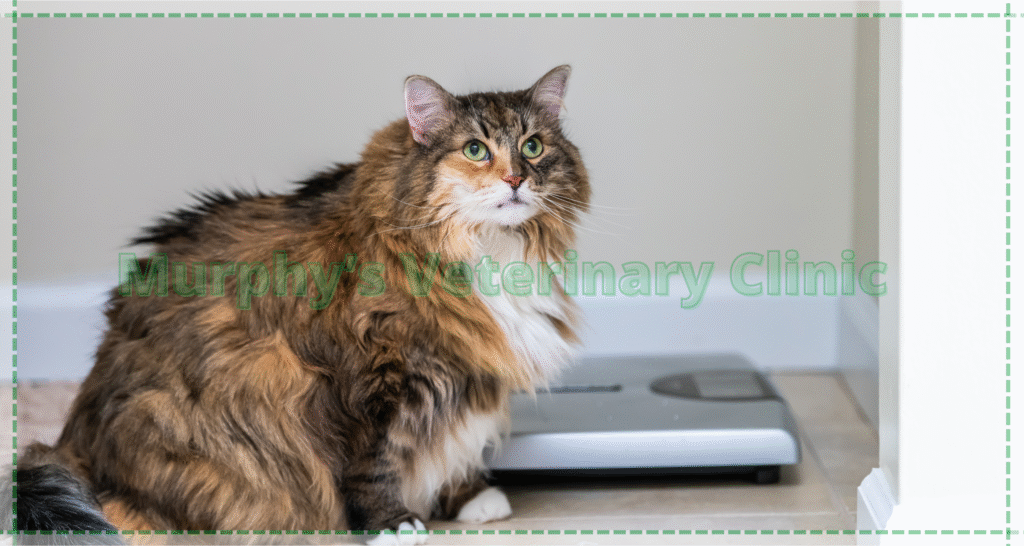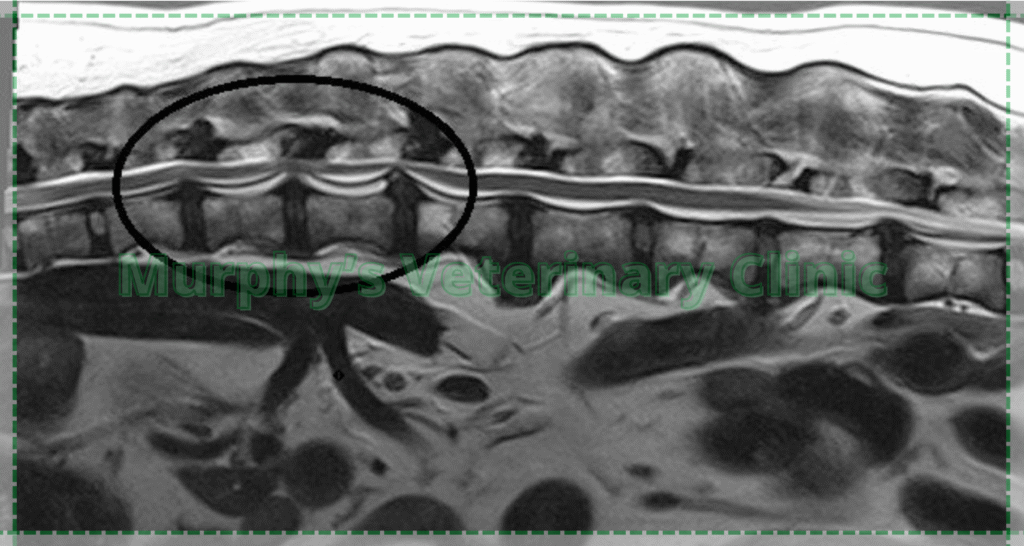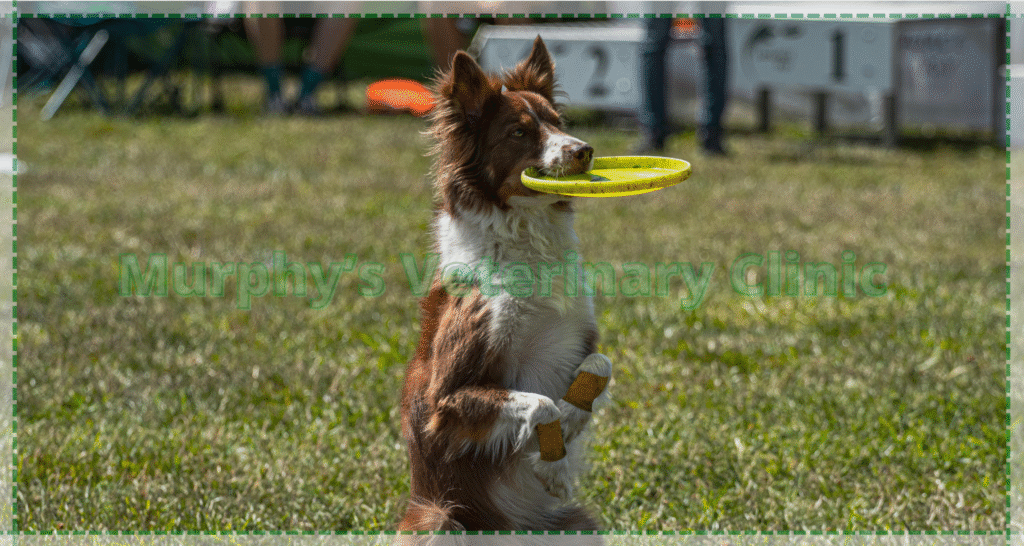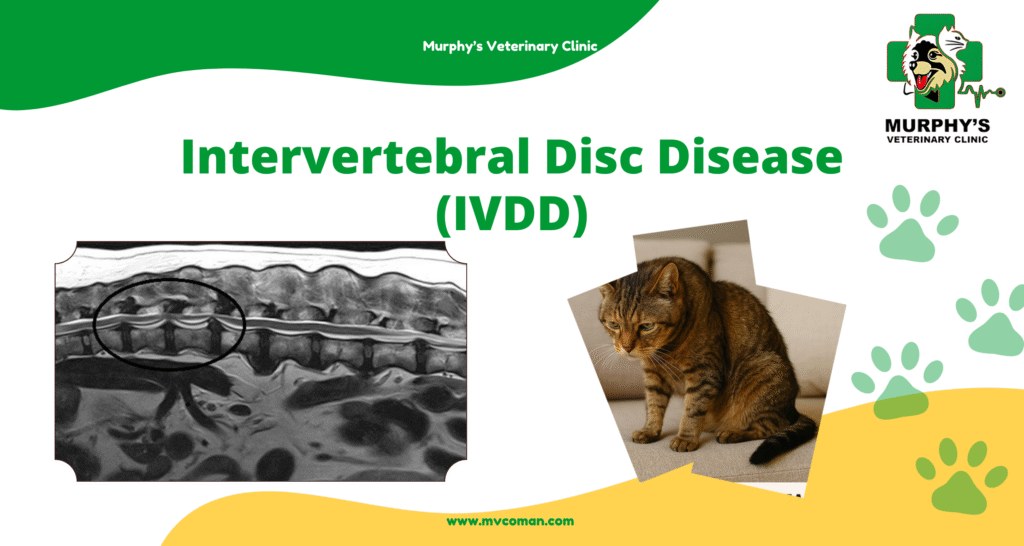Diseases & Treatments, Health & General Care, Veterinary Science & Advances
Intervertebral Disc Disease (IVDD)
Topics covered in this article:
- Causes of Intervertebral Disc Disease (IVDD)
- Clinical Signs of Intervertebral Disc Disease (IVDD)
- Diagnostic Methods for Intervertebral Disc Disease (IVDD)
- Treatment Options for Intervertebral Disc Disease (IVDD)
- Prevention of Intervertebral Disc Disease (IVDD)
- Conclusion
Intervertebral Disc Disease (IVDD) is one of the most common spinal disorders in companion animals, especially dogs and cats. This disease occurs when the intervertebral discs, which serve as cushions and shock absorbers between the vertebrae, undergo degeneration or injury. As a result, pets may experience severe pain, restricted mobility, or even paralysis in the limbs. Early detection of Intervertebral Disc Disease is crucial because timely diagnosis prevents the rapid progression of the condition. Veterinarians typically rely on clinical examinations along with advanced imaging to identify the disorder. Genetic predisposition, aging, and lifestyle factors play significant roles in its development. Treatment options vary and may include medication, physiotherapy, or surgical intervention in severe cases. Awareness of the early warning signs of Intervertebral Disc Disease by pet owners is essential to protect the long-term health and quality of life of their animals.

Causes of Intervertebral Disc Disease (IVDD)
Intervertebral Disc Disease can develop due to several underlying factors. Aging, genetic predisposition, and daily habits of the pet are important contributors. Certain breeds are more prone to the disorder, and recognizing these causes is essential for prevention and proper management.
- Genetic predisposition
- Aging process
- Obesity and excess body weight
- Risky movements and repetitive jumping

Clinical Signs of Intervertebral Disc Disease (IVDD)
The symptoms of Intervertebral Disc Disease vary depending on the severity and location of the lesion. Veterinarians carefully assess these signs to determine the stage of the disorder. Some pets may show only mild discomfort, while others may progress to paralysis. Identifying these clinical signs promptly is vital for pet owners.
- Spinal pain and tenderness
- Reduced willingness to move or play
- Lameness or limb weakness
- Loss of bladder or bowel control

Diagnostic Methods for Intervertebral Disc Disease (IVDD)
Diagnosing Intervertebral Disc Disease requires not only a thorough clinical examination but also the integration of advanced diagnostic imaging techniques such as MRI, CT scans, and specialized radiography. Veterinarians rely on a wide range of clinical tools to carefully assess the spinal condition, evaluate neurological function, and accurately localize the specific site of the lesion along the spine. By combining these methods, they are able to form a precise understanding of the severity of the disease and develop an appropriate treatment plan tailored to the individual animal. Early detection plays a crucial role in the overall management of the disorder, as identifying the condition in its initial stages allows for less invasive treatment options, reduces the risk of permanent damage, and significantly improves the likelihood of a successful recovery and restoration of mobility.
- Neurological and physical examination
- Radiography (X-ray)
- Magnetic Resonance Imaging (MRI)
- Computed Tomography (CT scan)
- Blood tests and supplementary analyses

Treatment Options for Intervertebral Disc Disease (IVDD)
The treatment of Intervertebral Disc Disease depends on the severity of spinal damage and the animal’s condition. In mild cases, medications and strict rest may be sufficient, but in advanced cases, surgical intervention becomes necessary. Choosing the best therapeutic approach must always be guided by a veterinarian.
| Treatment Method | Description |
| Medication | Use of anti-inflammatory drugs and analgesics to reduce pain |
| Physiotherapy | Targeted exercises to strengthen muscles and relieve pressure |
| Strict rest | Restriction of activity and prevention of jumping or running |
| Surgery | Removal or repair of the affected disc portion |

Prevention of Intervertebral Disc Disease (IVDD)
Prevention is always far more effective and less stressful than treatment, both for pets and their owners. By adopting a proactive approach, pet owners can significantly reduce the risk of serious spinal problems that may limit mobility and cause chronic discomfort. Simple yet essential practices, when applied consistently, make a remarkable difference in long-term health. Providing a balanced diet tailored to the pet’s age, weight, and breed helps maintain an ideal body condition, preventing the strain that excess weight places on the spine. Controlled physical activity, including safe exercise routines that avoid sudden jumps or repetitive high-impact movements, supports joint flexibility and muscular strength, which protect the back. In addition, regular veterinary checkups ensure that any early signs of spinal stress are detected before they progress into more severe conditions. Together, these preventive measures not only minimize the risk of disease but also promote overall well-being, allowing pets to remain active, comfortable, and happy throughout their lives.
| Preventive Strategy | Description |
| Maintaining ideal weight | Avoids excessive pressure on the spine |
| Appropriate physical activity | Gentle, controlled exercise without heavy jumping |
| Use of proper harness and leash | Reduces strain during walking and training |
| Regular veterinary checkups | Allows early detection of spinal conditions |
Conclusion
Spinal disorders such as Intervertebral Disc Disease (IVDD) can seriously impact a pet’s mobility, comfort, and quality of life. Early recognition of symptoms and timely veterinary care greatly improve treatment outcomes. Management may involve medications, surgery, or other approaches depending on the severity and the animal’s needs. Pet owners play an essential role in noticing signs and ensuring proper care. Preventive strategies—including weight control, safe exercise, and awareness of breed-specific risks—help reduce the likelihood of back problems. With early attention and consistent management, pets can maintain better spinal health, avoid complications, and enjoy a higher quality of life.
Murphy’s Veterinary Clinic provides comprehensive diagnostic and treatment services for pets affected by Intervertebral Disc Disease. With advanced imaging technology and a specialized medical team, the clinic ensures accurate evaluation and targeted therapeutic plans. Services include medication management, physiotherapy programs, and advanced surgical interventions when required. Pet owners can rely on Murphy’s Veterinary Clinic as a trusted partner in preserving their pet’s spinal health and overall well-being.


